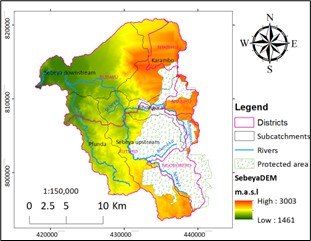Seed capital for climate-resilient business ideas (Non-repayable short-term financing)
Julie Ross, local entrepreneur, recipient of seed capital
GIZ / EbA LAC / Nicolás Villaume
Strengthening and consolidating climate-resilient rural ventures requires financing products that support these initiatives from inception. Rural entrepreneurs often encounter barriers to accessing traditional credit financing, particularly during the startup phase of their business models.
In this context, non-repayable funds—also known as seed capital—serve as a vital tool. This financing enables entrepreneurs to prototype promising ideas that can become dynamic ventures, fosters an entrepreneurial culture in rural territories, and provides crucial support during the early "valley of death" phase of business development.
This building block focuses on developing open public calls for seed capital funds that incorporate climate change adaptation criteria across business models. The design of these calls must include clear eligibility requirements for climate resilience, adaptation practices, and profitable business models with measurable socio-environmental impact. This financing can particularly benefit ventures led by youth, women, and vulnerable rural populations—making it essential to consider these demographics in the eligibility criteria
• Institutional willingness to modify existing or create new seed capital programs that incorporate climate adaptation and resilience criteria.
• Network of seed capital agencies and strategic partners (incubators, accelerators) who understand and can provide technical assistance for integrating climate resilience into business models.
• Trained evaluation team capable of identifying adaptation measures in business models to ensure selection criteria support climate adaptation. Strong entrepreneurial culture and climate change awareness among young people that drives innovative, climate-resilient business models.
• Combine seed capital funding with technical assistance like mentoring and incubation to help develop realistic business ideas suited to the local context and ensure long-term business sustainability.
• Include specific support measures for women, youth, indigenous peoples, and other historically excluded groups to ensure equal access to financing opportunities.
• Design realistic processes and timelines that match the venture's development stage. Make application forms clear, accessible, and appropriate for the target entrepreneurs.
• Create outreach strategies that engage key rural stakeholders to maximize participation and diversity in funding calls.
• Consolidate climate-resilient startups by providing medium- and long-term financing options that support business growth
